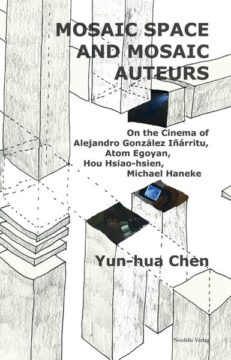„Mosaic Space and Mosaic Auteurs“ constructs a model of mosaic, which extends our focus beyond narrative strategy, to approach the trend of diverse multi-strand films across genres, nations and filmmaking contexts since the late 1980s. Different from investigation of this recurring global phenomenon from perspectives of spectator engagement, narratology, cognitive understanding and socio-political messages, proposed by film scholars, the model of mosaic helps establish the intertwining relationship between narrative, aesthetics, transnational production, and distribution modes – and in the framework of contextualised geopolitical spaces. Mosaic space in the world of cinema is hence interwoven through a variety of cinematic means, ranging from narrative to camerawork, framing, and mise-en-scène.
As the transnational auteurs in question draw talents, resources, and subject matters from a wide range of geopolitical spaces along their border-crossing journeys, their films juxtapose diverse spatial configurations. The study terms these auteurs ‘mosaic auteurs’, the assembled film space ‘mosaic space’, and the multi-strand narrative ‘mosaic narrative’, in order to stress the transversing nature of mosaic. In fact, ‘mosaic’ is a spatial metaphor which puts emphasis on the visual image of spaces and links space, narrative, and authorship into a multidimensional model of spatial compilation. It is a mosaic which gathers, groups, juxtaposes, and re-arranges spaces, offering a reading of mosaic beyond an exclusive focus on narrative.
Mosaic Space and Mosaic Auteurs
On the Cinema of Alejandro González Iñárritu, Atom Egoyan, Hou Hsiao-hsien, Michael Haneke
von Yun-hua Chen
